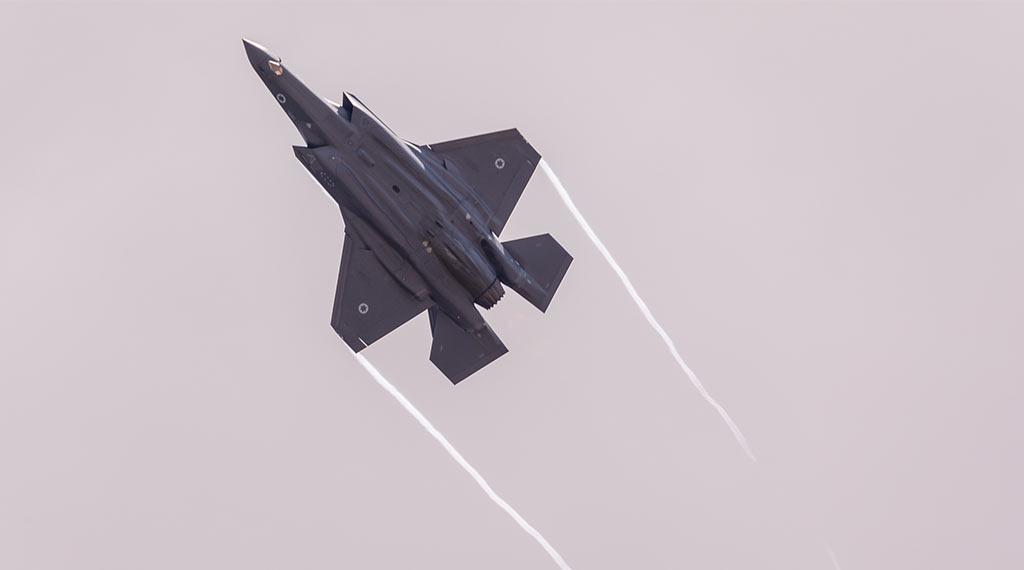
Meet the F-35I Adir: Israel and its top adversary Iran have been engaged in a shadow war for years.
Recently, however, tensions have escalated amidst Tehran’s efforts to acquire a nuclear bomb.
Earlier this month, the Jewish state reaffirmed its ability to carry out a preemptive strike on Iran, which would likely result in a multifront war.
“The reality in our region is changing rapidly. We are not stagnating. We are adapting our combat doctrine and our possibilities for action in keeping with these changes,” Israel Prime Minister Benjamin Netanyahu said at the meeting, which took place in an underground military bunker in Tel Aviv. “We are committed to acting against the Iranian nuclear program, against missile attacks … and against … what we call a multifront campaign.”
Meet the F-35I Adir
If such a strike were to break out in the near future, Israel’s fleet of specialized F-35I fighters would certainly lead the effort. The Israeli Air Force reportedly operates at least 35 F-35 “Adir” variants of the American-made F-35 Joint Strike Fighter.
Back in 2010, the Jewish state became the first foreign customer to procure the F-35 through the U.S. government’s Foreign Military Sales process. With a Letter of Agreement, Israel was able to purchase a uniquely modified version of the F-35, equipped with capabilities and features needed to support the country’s security needs.
The fact that Israel was given the green light to order a new version of the fifth-generation fighter was significant since in the past, the Pentagon had refused to incorporate even the slightest client-requested alterations to F-35 export batches.
What makes Israel’s F-35 “Adir” so formidable?
While the Lockheed Martin F-35 is widely touted as the most sophisticated fighter to take to the skies, Israel’s Adir (Mighty One) variant may actually have it beat. Most significantly, the Israeli Air Force can externally modify the Adirs, which includes conformal fuel tanks.
The F-35I fighter also features indigenous electronic warfare systems (EWS), including domestically-produced countermeasures and sensors, in addition to Israeli-made helmet-mounted displays and other data-gathering and processing capabilities.
Based on Israel’s unique defense needs, possessing F-35s with such advanced EWS is critical since the IAF can better jam the electronics and guidance systems of enemy-launched anti-aircraft weapons.
What about the Adirs’ range issue?
Perhaps the only limitation Israel’s specialized F-35s possess is range. Since Iran is the Jewish state’s primary adversary, the ability to reach Iranian territory and airspace is essential. However, the F-35I required mid-air refueling initially.
The Jerusalem Post, however, reported last June that the IAF had developed a new capability that enables its Adir fighters to fly from Israel to Iran’s airspace without needing mid-air refueling. Additionally, the report noted that “the IAF recently integrated a new one-ton bomb into the arsenal of weapons used by the F-35s (known in the IAF as the “Adir”) that can be carried inside the plane’s internal weapons compartment without jeopardizing its stealth radar signature.”
According to Israel’s Begin Doctrine, a preventive strike carried out to prevent enemies’ capability to possess weapons of mass destruction- including nuclear weapons- is necessary. Considering Tehran’s proximity to becoming a nuclear threshold state, the likelihood of such an attack has increased.
- America’s Supercarriers Are Back in Force in the Pacific - December 30, 2025
- Israel’s $2 Iron Beam Laser Could Disrupt Missile Warfare - December 23, 2025
- US Stands Up New Drone Strike Force in the Middle East - December 9, 2025
